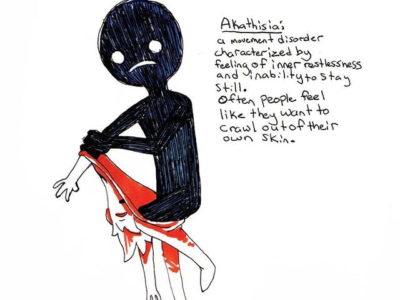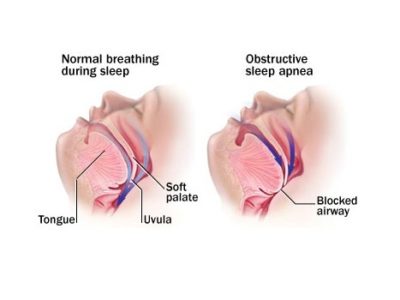
Topic: Avoidant/Restrictive Food Intake Disorder (ARFID).
Author: Zena Amjad Haddadin
Editor: Ihdaa Mahmoud Bani Khalaf,Sadeen Sameer.
Reviewer: Ethar Hazaimeh
Keywords: Avoidant, Restrictive food intake, ARFID, nutritional insufficiency, food avoidance.
Overview
Abnormal eating or weight-control behaviors are the hallmarks of eating disorders, which are serious psychiatric conditions. Eating disorders significantly negatively impact physical health and are linked to considerably higher mortality rates than the general population.1
The American Psychiatric Association (APA) published the latest Diagnostic and Statistical Manual of Mental Disorders Edition 5 (DSM-5) in May 2013. This updated edition introduces a new classification to eating disorders which includes an additional section “feeding and eating disorders” that replaces and unifies two previous parts, “eating disorders” and “feeding/eating disorders of infancy or early childhood,” found in the DSM-4.2
The DSM-4 diagnosis of “feeding and eating disorders of infancy or early childhood” presented a few gaps such as the age restriction of only including children under the age of 6 and the demand for weight loss to be present in order to make the diagnosis. This problem led to a group of people being left with an “eating disorder not otherwise specified” (EDNOS) diagnosis. Because of that, the DSM-5 includes the new diagnosis “Avoidant restrictive food intake disorder” (ARFID) to cover all age groups.3 According to the Eating Disorders Consultation Group for revision of the International Classification of Diseases (ICD-10), ARFID is considered one of the 6 main subtypes of “feeding and eating disorders” and it mainly focuses on patients suffering from eating disturbances that are accompanied by clinical and psychosocial consequences.4
Epidemiology
A retrospective study was conducted among patients aged between 8 and 18 to evaluate if they meet the DSM-5 diagnostic criteria of avoidant restrictive food intake disorder. The sample included 2,231 patients seeking treatment in 19 different pediatric gastroenterology clinics in Boston between January 1st, 2008, and December 31st, 2008. The results showed that the prevalence of ARFID among this sample was 1.5% (33 individuals) with more than half of the patients being males (67%).5 In another retrospective study, the sample targeted patients aged 8-17 years in an eating disorder clinic at a Canadian tertiary care pediatric hospital. The study reviewed cases between January 2000 and May 2017. Of the 1078 patients evaluated, 7% (77) were diagnosed with ARFID, from whom 73% (56) were females.6
ARFID’s 3-month prevalence was 0.3% in 2014 and 0.3% in 2015, according to Australian interview-based research of males and females aged 15 and older.7
Etiology and pathogenesis
Avoidant restrictive food intake disorder is an eating disorder involving food avoidance or restriction that may be driven by one or more of the following factors:8
1) lack of interest in food
2) sensitivity to food texture, taste, or smell.
3) A traumatizing experience such as vomiting, choking, or experiencing any form of gastrointestinal distress.
Nevertheless, these behaviors cannot be brought on by a lack of food or by socially acceptable customs; they cannot be driven by a fear of gaining weight or by an excessive value placed on one’s appearance, as in anorexia nervosa (AN) or bulimia nervosa (BN); and they cannot be better explained by another medical or psychological condition.9 Food avoidance or restriction must be more extreme than what would be customary for the co-occurring disease if another medical or psychiatric disorder is present.3
In individuals that have had a traumatic food encounter and then started avoiding similar food to prevent it from happening again, the avoidance temporarily lessens worry, but over time it increases anxiety by limiting the chance for future corrective learning to take place. These people frequently have a tendency to anxiety, and their food avoidance extends beyond the index item to comparable foods, then to entire food groups, and in some of the most extreme situations, to avoidance of all solid foods.8
A classic example that can be used to demonstrate how all 3 previously mentioned elements can simultaneously take part in developing the disorder would be a young individual who has long-term selective eating (also known as sensory sensitivity) and chronic poor appetite (also known as lack of interest in eating) who experiences abrupt weight loss after an acute choking incident (thus developing a fear of aversive consequences).10
However, there may be other motivations contributing to developing this disorder, so it is feared that following these criteria may lead to the neglect of some cases.9 Moreover, current knowledge of many eating disorders proposes that their cause may be related to both environmental and genetic factors.11 Studies have shown a close relationship between anorexia nervosa and avoidant restrictive feeding disorder, in fact, many Avoidant restrictive food intake disorder cases end up developing into anorexia nervosa suggesting that both disorders may share a common etiology.12-14
Clinical presentation and Diagnosis
Patients exhibiting Avoidant restrictive food intake disorder symptoms frequently seek out general pediatric, endocrinologic, or gastrointestinal (GI) treatments at first since in many cases physical problems like low weight and delayed growth become obvious before disordered eating habits catch attention.15 ARFID can be misinterpreted for picky eating, but the presence of functional alterations such as concurrently low weight or an inability to grow in line with their developmental trajectory may indicate the presence of an eating disorder.16
Signs and Symptoms
The clinical presentation of Avoidant restrictive food intake disorder may greatly vary among patients, it may present as decreased weight, dependence on nutritional supplements or tube feeding to meet calorie needs, nutritional deficiency, and/or psychosocial impairment. As mentioned previously, the person must not have any concerns related to their body image and weight in order to make the diagnosis of ARFID.9 This explains why ARFID patients are more accepting and cooperative when using nasogastric feeding when compared to anorexia nervosa patients.14 They may even have the intention to increase their appetite and gain the weight needed to become healthier, indifferent to the body changes they may face.14
On physical exam, the clinical signs of ARFID can sometimes resemble those of anorexia nervosa, some of the findings that may be seen include xeroderma, lanugo hair, thin appearance, bradycardia, hypothermia, pale skin, and delayed capillary refill time.3
The pediatric age group suffering from ARFID can often be divided according to the duration of their complaints into acute (rapid and recent weight loss after a traumatizing experience), subacute (general abdominal distress and weight loss), and chronic (poor growth and selectivity for a long time).3
The current diagnostic criteria stated in the DSM-5 require the presence of at least 1 of the 3 contributing factors mentioned earlier, along with no body weight dissatisfaction.17 Dietary history, clinical and biological evaluations (such as assessment of dietary intake, physical examination, and laboratory tests), and the presence of clinical effects on physical health are used to diagnose substantial nutritional deficits in ARFID children.18
DSM-5 Diagnostic Criteria19
Avoidant Restrictive Food Intake Disorder
- An eating or feeding disturbance (e.g., apparent lack of interest in eating or food; avoidance based on the sensory characteristics of food; concern about aversive consequences of eating) as manifested by persistent failure to meet appropriate nutritional and/or energy needs associated with one (or more) of the following:
- Significant weight loss (failure to achieve expected weight gain or faltering growth in children).
- Significant nutritional deficiency.
- Dependence on enteral feeding or oral nutritional supplements.
- Marked interference with psychosocial functioning.
- The disturbance is not better explained by lack of available food or by an associated culturally sanctioned practice.
- The eating disturbance does not occur exclusively during the course of anorexia nervosa or bulimia nervosa, and there is no evidence of a disturbance in the way in which one’s body weight or shape is experienced.
- The eating disturbance is not attributable to a concurrent medical condition or not better explained by another mental disorder. When the eating disturbance occurs in the context of another condition or disorder, the severity of the eating disturbance exceeds that routinely associated with the condition or disorder and warrants additional clinical attention.
Comorbidities and Complications
People with eating disorders typically have psychiatric comorbidities (>70%). Mood and anxiety disorders, neurodevelopmental disorders, alcohol and substance use disorders, and personality disorders are the most typical psychiatric comorbidities.20 21 Eating disorders are more common in people with diabetes.16
Studies have demonstrated that Avoidant restrictive food intake disorder is more commonly seen among males and younger age groups.22 23 13
When compared to other eating disorders, ARFID showed higher rates of psychiatric comorbidities including OCD, anxiety disorders, learning disability, autism spectrum disorder, and cognitive impairment 2
The result of the long-term avoidance of a variety of food can eventually lead to the inability to supply the body with its nutritional demands causing insufficient growth and weight loss. However, this does not mean that low weight is needed to make the diagnosis, research has suggested that an ARFID diagnosis can be made in normal and overweight individuals.24
Treatment and management
Early detection of Avoidant restrictive food intake disorder requires a low threshold of suspicion, and treatment planning depends on making the distinction between ARFID and other eating disorders.3
Limited data is available regarding the treatment and management of ARFID cases. However, a few considerations should be kept in mind before starting any treatment. Factors that need to be reviewed include the degree of nutritional insufficiency, the impact of the condition on the patient’s social and psychological well-being, any weight changes or growth disturbances, and lastly whether the patient has been struggling with ARFID for a short or long period. Knowing the disorder’s duration is crucial since the treatment’s success largely depends on it.2 Short terms patients tend to have a better prognosis when compared to long-term sufferers. The reason behind this might be that people who have been suffering from this disorder for a short time still remember how their balanced diet used to be and tend to find it much easier to return to their normal eating habits.2
Family-based treatment
Treatment options available include family-based treatment (FBT) which mainly encourages the parents to control the child or adolescent’s diet by making sure to increase the quantity and the variability of food in each meal.25
Cognitive behavioral therapy
Cognitive behavioral therapy (CBT) has also been mentioned in several case reports and case series which involves eating meals regularly, exposure and response prevention, monitoring food intake, and relaxation training.25 26 27 For example, a case study describes the presentation and treatment of a 42-year-old man who claimed to be a restrictive eater throughout his childhood. 28 Since adolescence, he had failed to fulfill the recommended nutritional intake with one meal at night and 10 to 20 standard alcoholic beverages. Ten cognitive behavioral therapy sessions were provided. At the 1-month follow-up, improvements in food intake and alcohol consumption were noticed at the completion of treatment, as well as reductions in depression, anxiety, and stress. However, at the 3-month follow-up, excessive drinking had returned, along with an increase in negative affect and eating-related impairment, suggesting that this population may benefit from longer-term therapy.28
Tube feeding
An alternative option available for hospitalized ARFID patients is tube feeding. Although it can be vital in certain cases, a study has suggested the risk of developing dependence on tube feeding and how it can negatively impact the patient’s oral intake.29
Pharmacotherapy
Lastly, studies have suggested the effectiveness of giving drugs as an adjuvant therapy in the treatment of ARFID to ease meal consumption and promote weight gain.30 31 32 In a retrospective study of 14 children and adolescents, an increase in weight was noticed after prescribing mirtazapine to them.30 Added research showed that mirtazapine use in ARFID patients was associated with a higher rate of weight gain when compared to the use of a standard weight restoration program.30 In a similar study on 9 patients, the outcome of administering olanzapine was also a significant increase in weight. The effectiveness of D-cycloserine (DCS) was also tested in a double-blind randomized placebo-controlled trial and the results showed that patients given DCS had experienced fewer disturbances when it comes to their mealtime and faster bite swallowing when compared to placebo patients.25
Conclusion
Eating disorders are a growing issue that should be seriously addressed and dealt with. Investigations and care should be provided as soon as possible to minimize the complications and to have an overall better outcome. Avoidant restrictive food intake disorder is a new diagnosis that was first introduced in the DSM-5 describing a group of patients that lack body image concerns making it unique from other eating disorders previously mentioned in the DSM-4. Even with growing research, no standard treatment for all ARFID patients is found and little is known about the management of adults.10
References...












good job
Thank you!!